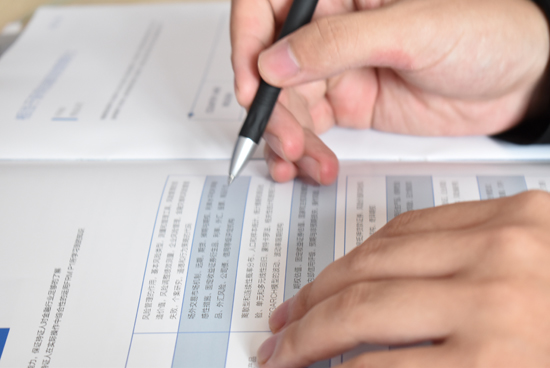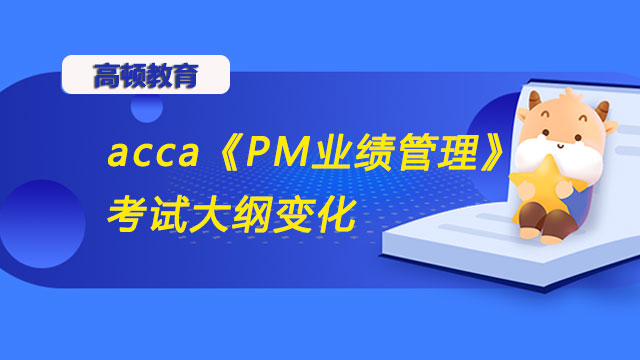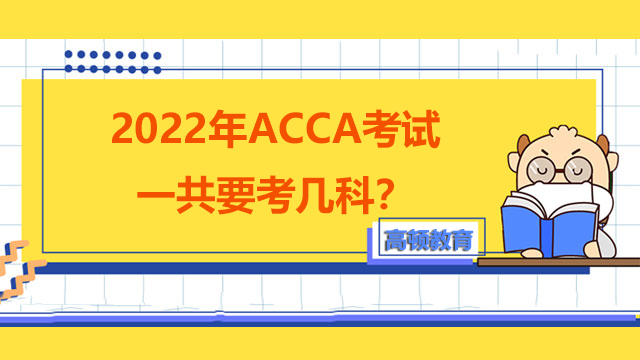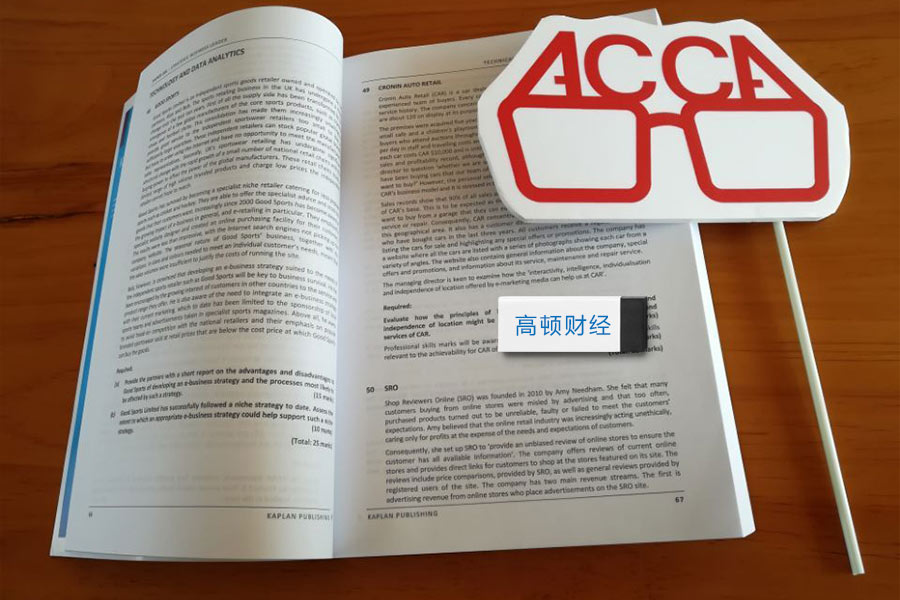2015ACCA F3 财务会计考试大纲
来源:
高顿网校
2015-03-25
? ACCA 2014 All rights reserved.
1
Financial Accounting
(F3/FFA)
February 2014 to August
2015
This syllabus and study guide are designed to help
with teaching and learning and is intended to
provide detailed information on what could be
assessed in any examination session.
THE STRUCTURE OF THE SYLLABUS AND
STUDY GUIDE
Relational diagram with other papers
This diagram shows direct and indirect links
between this examination and other examinations
which precede or follow it. Some examinations are
directly underpinned by others. These links are
shown as solid line arrows. The indirect links are
shown as dotted line arrows. The relational diagram
therefore indicates where learners are expected to
have underpinning knowledge and where it would
be useful to review previous learning before
undertaking study.
Overall aim of the syllabus
This explains briefly the overall objective of the
examination and indicates in the broadest sense the
capabilities to be developed within the examination.
Main capabilities
This syllabus’s aim is broken down into several
main capabilities which divide the syllabus and
study guide into discrete sections.
Relational diagram of main capabilities
This diagram illustrates the flows and links between
the main capabilities (sections) of the syllabus and
should be used as an aid to planning teaching and
learning in a structured way.
Syllabus rationale
This is a narrative explaining how the syllabus is
structured and how the main capabilities or sections
of the syllabus are linked. The rationale also
explains in further detail what the examination
intends to assess and how.
Detailed syllabus
This shows the breakdown of the main capabilities
(sections) of the syllabus into subject areas. This is
the blueprint for the detailed study guide.
Approach to examining the syllabus
This section briefly explains the structure of the
examination and how it is assessed.
Study Guide
This is the main document that students and
learning and content providers should use as the
basis of their studies, instruction and materials
respectively.
Examinations will be based on the detail of the
study guide which comprehensively identifies what
could be assessed within any examination session.
The study guide is a precise reflection and
breakdown of the syllabus. It is divided into sections
based on the main capabilities identified in the
syllabus. These sections are divided into subject
areas which relate to the sub-capabilities included
in the detailed syllabus. Subject areas are broken
down into sub-headings which describe the detailed
outcomes that could be assessed in examinations.
These outcomes indicate what exams may require
students to demonstrate, and the broad intellectual
level at which these may need to be demonstrated
(*see intellectual levels below)。
LEVEL OF ASSESSMENTS – INTELLECTUAL
DEMAND
ACCA qualifications are designed to progressively
broaden and deepen the knowledge and skills
demonstrated by the student at a range of levels
through each qualification.
Throughout, the study guides assess both
knowledge and skills. Therefore a clear distinction is
drawn, within each subject area, between assessing
knowledge and skills and in assessing their
application within an accounting or business
context. The assessment of knowledge is denoted by
a superscriptK and the assessment of skills is
denoted by the superscriptS.
? ACCA 2014 All rights reserved.
2
VALUE OF ASSESSMENTS – GUIDED LEARNING
HOURS AND EDUCATION RECOGNITION
As a member of the International Federation of
Accountants, ACCA seeks to enhance the education
recognition of its qualification on both national and
international education frameworks, and with
educational authorities and partners globally. In
doing so, ACCA aims to ensure that its qualifications
are recognized and valued by governments,
regulatory authorities and employers across all
sectors. To this end, ACCA qualifications are
currently recognized on the education frameworks in
several countries. Please refer to your national
education framework regulator for further
information about recognition.
GUIDE TO EXAM STRUCTURE
The structure of examinations varies within and
between modules and levels.
The Foundations examinations contain 100%
compulsory questions to encourage candidates to
study across the breadth of each syllabus.
All Foundations examinations are assessed by twohour
paper based and computer based
examinations.
The pass mark for all FIA examination papers is
50%.
GUIDE TO EXAMINATION ASSESSMENT
ACCA reserves the right to examine anything
contained within any study guide within any
examination session. This includes knowledge,
techniques, principles, theories, and concepts as
specified.
For specified financial accounting, audit and tax
papers, except where indicated otherwise, ACCA
will publish examinable documents once a year to
indicate exactly what regulations and legislation
could potentially be assessed within identified
examination sessions.
For this examination regulation issued or legislation
passed on or before 30th September 2013, will be
assessed from February 2014 to August 31st 2015.
Please refer to the examinable documents for the
paper (where relevant) for further information.
Regulation issued or legislation passed in
accordance with the above dates may be
examinable even if the effective date is in the future.
The term issued or passed relates to when
regulation or legislation has been formally approved.
The term effective relates to when regulation or
legislation must be applied to entity transactions
and business practices.
The study guide offers more detailed guidance on
the depth and level at which the examinable
documents will be examined. The study guide
should therefore be read in conjunction with the
examinable documents list.
? ACCA 2014 All rights reserved.
3
Qualification Structure
The qualification structure requires candidates who wish to be awarded the Diploma in Accounting and Business
to pass the F1/FAB, F2/FMA and the F3/FFA examinations and successfully complete the Foundations in
Professionalism module
Syllabus Structure
The Foundations in Accountancy suite of
qualifications is designed so that a student can
progress through three discrete levels; Introductory
Certificate level, Intermediate Certificate level and
the Diploma level.
Students are recommended to enter Foundations in
Accountancy at the level which is most appropriate
to their needs and to take
examinations in order, but this is not a mandatory
requirement
F1/FAB F2/FMA F3/FFA FiP*
Diploma in
Accounting
and Business
+ + + =
* Foundations in Professionalism
P2
F7
F3
FA1
FA2
FFA
ACCA
FIA
? ACCA 2014 All rights reserved.
4
Syllabus
AIM
To develop knowledge and understanding of the
underlying principles and concepts relating to
financial accounting and technical proficiency in the
use of double-entry accounting techniques including
the preparation of basic financial statements.
RATIONALE
The syllabus for Paper FFA/F3, Financial
Accounting, introduces the candidate to the
fundamentals of the regulatory framework relating to
accounts preparation and to the qualitative
characteristics of useful information. The syllabus
then covers drafting financial statements and the
principles of accounts preparation. The syllabus
then concentrates in depth on recording, processing,
and reporting business transactions and events. The
syllabus then covers the use of the trial balance and
how to identify and correct errors, and then the
preparation of financial statements for incorporated
and unincorporated entities. The syllabus then
moves in two directions, firstly requiring candidates
to be able to conduct a basic interpretation of
financial statements; and secondly requiring the
preparation of simple consolidated
financial statements from the individual financial
statements of group incorporated entities
MAIN CAPABILITIES
On successful completion of this paper, candidates
should be able to:
A. Explain the context and purpose of financial
reporting
B. Define the qualitative characteristics of
financial information
C. Demonstrate the use of double-entry and
accounting systems
D. Record transactions and events
E. Prepare a trial balance (including identifying
and correcting errors)
F. Prepare basic financial statements for
incorporated and unincorporated entities.
G. Prepare simple consolidated financial
statements
H. Interpretation of financial statements
RELATIONAL DIAGRAM OF MAIN CAPABILITIES
The context and purpose
of financial reporting
(A)
The qualitative
characteristics
of financial information (B)
The use of double-entry and accounting systems (C)
Preparing a trial balance (E)
Preparing basic financial statements (F)
Preparing simple consolidated financial statements (G)
Recording
transactions
and events (D)
Interpretation of
financial
statements (H)
? ACCA 2014 All rights reserved.
5
DETAILED SYLLABUS
A The context and purpose of financial reporting
1. The scope and purpose of financial statements
for external reporting
2. Users’ and stakeholders’ needs
3. The main elements of financial reports
4. The regulatory framework (legislation and
regulation, reasons and limitations, relevance
of accounting standards)
5. Duties and responsibilities of those charged
with governance.
B The qualitative characteristics of financial
information
1. The qualitative characteristics of financial
information
C The use of double-entry and accounting
systems
1. Double-entry book-keeping principles including
the maintenance of accounting records and
sources of accounting information
2. Ledger accounts, books of prime entry, and
journals
D Recording transactions and events
1. Sales and purchases
2. Cash
3. Inventory
4. Tangible non-current assets
5. Depreciation
6. Intangible non-current assets and amortisation
7. Accruals and prepayments
8. Receivables and payables
9. Provisions and contingencies
10. Capital structure and finance costs
E Preparing a trial balance
1. Trial balance
2. Correction of errors
3. Control accounts and reconciliations
4. Bank reconciliations
5. Suspense accounts
F Preparing basic financial statements
1. Statements of financial position
2. Statements of profit or loss and other
comprehensive income
3. Disclosure notes
4 Events after the reporting period
5. Statements of cash flows
6. Incomplete records
G Preparing simple consolidated financial
statements
1. Subsidiaries
2. Associates
H Interpretation of financial statements
1. Importance and purpose of analysis of financial
statements
2. Ratios
3. Analysis of financial statements
? ACCA 2014 All rights reserved.
6
APPROACH TO EXAMINING THE SYLLABUS
THE SYLLABUS IS ASSESSED BY A TWO HOUR
PAPER-BASED OR COMPUTER-BASED
EXAMINATION.
The syllabus is assessed by a two hour paper-based
or computer-based examination. Questions will
assess all parts of the syllabus and will test
knowledge and some comprehension or application
of this knowledge. The examination will consist of
two sections. Section A will contain 35 two mark
objective questions. Section B will contain 2 fifteen
mark multi-task questions. These will test
consolidations and accounts preparation. The
consolidation question could include a small
amount of interpretation and the accounts
preparation question could be set in the context of
a sole trader or a limited company
? ACCA 2014 All rights reserved.
7
Study Guide
A THE CONTEXT AND PURPOSE OF FINANCIAL
REPORTING
1. The scope and purpose of, financial statements
for external reporting
a) Define financial reporting – recording,
analysing and summarising financial data.[K]
b) Identify and define types of business entity –
sole trader, partnership, limited liability
company.[K]
c) Recognise the legal differences between a sole
trader, partnership and a limited liability
company.[K]
d) Identify the advantages and disadvantages of
operating as a limited liability company, sole
trader or partnership.[K]
e) Understand the nature, principles and scope of
financial reporting.[K]
2. Users’ and stakeholders’ needs
a) Identify the users of financial statements and
state and differentiate between their
information needs.[K]
3. The main elements of financial reports
a) Understand and identify the purpose of each of
the main financial statements.[K]
b) Define and identify assets, liabilities, equity,
revenue and expenses.[K]
4. The regulatory framework
a) Understand the role of the regulatory system
including the roles of the IFRS Foundation
(IFRSF), the International Accounting
Standards Board (IASB), the IFRS Advisory
Council (IFRS AC) and the IFRS Interpretations
Committee (IFRS IC)。[K]
b) Understand the role of International Financial
Reporting Standards.[K]
5. Duties and responsibilities of those charged
with governance
a) Explain what is meant by governance
specifically in the context of the preparation of
financial statements[K]
b) Describe the duties and responsibilities of
directors and other parties covering the
preparation of the financial statements. [K]
B THE QUALITATIVE CHARACTERISTICS OF
FINANCIAL INFORMATION
1. The qualitative characteristics of financial
information
a) Define, understand and apply qualitative
characteristics:[K]
i) Relevance
ii) Faithful representation
iii) Comparability
iv) Verifiability
v) Timeliness
vi) Understandability
b) Define, understand and apply accounting
concepts:[K]
i) Materiality
ii) Substance over form
iii) Going concern
iv) Business entity concept
v) Accruals
vi) Fair presentation
iv) Consistency
C THE USE OF DOUBLE-ENTRY AND
ACCOUNTING SYSTEMS
1. Double-entry book-keeping principles including
the maintenance of accounting records
a) Identify and explain the function of the main
data sources in an accounting system.[K]
b) Outline the contents and purpose of different
types of business documentation, including:
quotation, sales order, purchase order, goods
received note, goods despatched note, invoice,
? ACCA 2014 All rights reserved.
8
statement, credit note, debit note, remittance
advice, receipt.[K]
c) Understand and apply the concept of doubleentry
accounting and the duality concept.[K]
d) Understand and apply the accounting
equation.[S]
e) Understand how the accounting system
contributes to providing useful accounting
information and complies with organisational
policies and deadlines.[K]
f) Identify the main types of business transactions
e.g. sales, purchases, payments, receipts.[K]
2. Ledger accounts, books of prime entry and
journals
a) Identify the main types of ledger accounts and
books of prime entry, and understand their
nature and function.[K]
b) Understand and illustrate the uses of journals
and the posting of journal entries into ledger
accounts.[S]
c) Identify correct journals from given narrative.[S]
d) Illustrate how to balance and close a ledger
account.[S]
D RECORDING TRANSACTIONS AND EVENTS
1. Sales and purchases
a) Record sale and purchase transactions in
ledger accounts.[S]
b) Understand and record sales and purchase
returns.[S]
c) Understand the general principles of the
operation of a sales tax.[K]
d) Calculate sales tax on transactions and record
the consequent accounting entries.[S]
e) Account for discounts allowed and discounts
received.[S]
2. Cash
a) Record cash transactions in ledger accounts.[S]
b) Understand the need for a record of petty cash
transactions.[K]
3. Inventory
a) Recognise the need for adjustments for
inventory in preparing financial statements.[K]
b) Record opening and closing inventory.[S]
c) Identify the alternative methods of valuing
inventory.[K]
d) Understand and apply the IASB requirements
for valuing inventories.[S]
e) Recognise which costs should be included in
valuing inventories.[S]
f) Understand the use of continuous and period
end inventory records.[K]
g) Calculate the value of closing inventory using
FIFO (first in, first out) and AVCO (average
cost)。[S]
h) Understand the impact of accounting concepts
on the valuation of inventory.[K]
i) Identify the impact of inventory valuation
methods on profit and on assets.[S]
4. Tangible non-current assets
a) Define non-current assets.[K]
b) Recognise the difference between current and
non-current assets.[K]
c) Explain the difference between capital and
revenue items. [K]
d) Classify expenditure as capital or revenue
expenditure.[S]
e) Prepare ledger entries to record the acquisition
and disposal of non-current assets.[S]
? ACCA 2014 All rights reserved.
9
f) Calculate and record profits or losses on
disposal of non-current assets in the statement
of profit or loss including part exchange
transactions.[S]
g) Record the revaluation of a non-current asset in
ledger accounts, the statement of profit or loss
and other comprehensive income and in the
statement of financial position.[S]
h) Calculate the profit or loss on disposal of a
revalued asset.[S]
i) Illustrate how non-current asset balances and
movements are disclosed in financial
statements.[S]
j) Explain the purpose and function of an asset
register.[K]
5. Depreciation
a) Understand and explain the purpose of
depreciation.[K]
b) Calculate the charge for depreciation using
straight line and reducing balance methods.[S]
c) Identify the circumstances where different
methods of depreciation would be
appropriate.[K]
d) Illustrate how depreciation expense and
accumulated depreciation are recorded in
ledger accounts.[S]
e) Calculate depreciation on a revalued noncurrent
asset including the transfer of excess
depreciation between the revaluation reserve
and retained earnings.[S]
f) Calculate the adjustments to depreciation
necessary if changes are made in the estimated
useful life and/or residual value of a noncurrent
asset.[S]
g) Record depreciation in the statement of profit
or loss and statement of financial position.[S]
6. Intangible non-current assets and amortisation
a) Recognise the difference between tangible and
intangible non-current assets.[K]
b) Identify types of intangible assets.[K]
c) Identify the definition and treatment of
“research costs” and “development costs” in
accordance with International Financial
Reporting Standards.[K]
d) Calculate amounts to be capitalised as
development expenditure or to be expensed
from given information.[S]
e) Explain the purpose of amortisation.[K]
f) Calculate and account for the charge for
amortisation.[S]
7. Accruals and prepayments
a) Understand how the matching concept applies
to accruals and prepayments.[K]
b) Identify and calculate the adjustments needed
for accruals and prepayments in preparing
financial statements.[S]
c) Illustrate the process of adjusting for accruals
and prepayments in preparing financial
statements.[S]
d) Prepare the journal entries and ledger entries
for the creation of an accrual or prepayment.[S]
e) Understand and identify the impact on profit
and net assets of accruals and prepayments.[S]
8. Receivables and payables
a) Explain and identify examples of receivables
and payables.[K]
b) Identify the benefits and costs of offering credit
facilities to customers.[K]
c) Understand the purpose of an aged receivables
analysis.[K]
d) Understand the purpose of credit limits.[K]]
e) Prepare the bookkeeping entries to write off an
irrecoverable debt.[S]
f) Record an irrecoverable debt recovered.[S]
? ACCA 2014 All rights reserved.
10
g) Identify the impact of irrecoverable debts on
the statement of profit or loss and on the
statement of financial position.[S]
h) Prepare the bookkeeping entries to create and
adjust an allowance for receivables.[S]
i) Illustrate how to include movements in the
allowance for receivables in the statement of
profit or loss and how the closing balance of
the allowance should appear in the statement
of financial position.[S]
j) Account for contras between trade receivables
and payables.[S]
k) Prepare, reconcile and understand the purpose
of supplier statements.[S]
l) Classify items as current or non-current
liabilities in the statement of financial
position.[S]
9. Provisions and contingencies
a) Understand the definition of “provision”,
“contingent liability” and “contingent asset”。[K]
b) Distinguish between and classify items as
provisions, contingent liabilities or contingent
assets.[K]
c) Identify and illustrate the different methods of
accounting for provisions, contingent liabilities
and contingent assets.[K]
d) Calculate provisions and changes in
provisions.[S]
e) Account for the movement in provisions.[S]
f) Report provisions in the final accounts.[S]
10. Capital structure and finance costs
a) Understand the capital structure of a limited
liability company including: [K]
i) Ordinary shares
ii) Preference shares (redeemable and
irredeemable)
iii) Loan notes.
b) Record movements in the share capital and
share premium accounts.[S]
c) Identify and record the other reserves which
may appear in the company statement of
financial position.[S]
d) Define a bonus (capitalisation) issue and its
advantages and disadvantages.[K]
e) Define a rights issue and its advantages and
disadvantages.[K]
f) Record and show the effects of a bonus
(capitalisation) issue in the statement of
financial position.[S]
g) Record and show the effects of a rights issue in
the statement of financial position.[S]
h) Record dividends in ledger accounts and the
financial statements.[S]
i) Calculate and record finance costs in ledger
accounts and the financial statements.[S]
j) Identify the components of the statement of
changes in equity.[K]
E PREPARING A TRIAL BALANCE
1. Trial balance
a) Identify the purpose of a trial balance.[K]
b) Extract ledger balances into a trial balance.[S]
c) Prepare extracts of an opening trial balance.[S]
d) Identify and understand the limitations of a
trial balance.[K]
2. Correction of errors
a) Identify the types of error which may occur in
bookkeeping systems.[K]
b) Identify errors which would be highlighted by
the extraction of a trial balance.[K]
c) Prepare journal entries to correct errors.[S]
? ACCA 2014 All rights reserved.
11
d) Calculate and understand the impact of errors
on the statement of profit or loss and other
comprehensive income and statement of
financial position.[S]
3. Control accounts and reconciliations
a) Understand the purpose of control accounts for
accounts receivable and accounts payable.[K]
b) Understand how control accounts relate to the
double-entry system.[K]
c) Prepare ledger control accounts from given
information.[S]
d) Perform control account reconciliations for
accounts receivable and accounts payable.[S]
e) Identify errors which would be highlighted by
performing a control account reconciliation.[K]
f) Identify and correct errors in control accounts
and ledger accounts.[S]
4. Bank reconciliations
a) Understand the purpose of bank
reconciliations.[K]
b) Identify the main reasons for differences
between the cash book and the bank
statement.[K]
c) Correct cash book errors and/or omissions.[S]
d) Prepare bank reconciliation statements.[S]
e) Derive bank statement and cash book balances
from given information.[S]
f) Identify the bank balance to be reported in the
final accounts.[S]
5. Suspense accounts
a) Understand the purpose of a suspense
account.[K]
b) Identify errors leading to the creation of a
suspense account.[K]
c) Record entries in a suspense account.[S]
d) Make journal entries to clear a suspense
account.[S]
F PREPARING BASIC FINANCIAL STATEMENTS
1. Statements of financial position
a) Recognise how the accounting equation,
accounting treatments as stipulated within
sections D, E and examinable documents and
business entity convention underlie the
statement of financial position.[K]
b) Understand the nature of reserves.[K]
c) Identify and report reserves in a company
statement of financial position.[S]
d) Prepare a statement of financial position or
extracts as applicable from given information
using accounting treatments as stipulated
within sections D, E and examinable
documents.[S]
e) Understand why the heading retained earnings
appears in a company statement of financial
position.[K]
2. Statements of profit or loss and other
comprehensive income
a) Prepare a statement of profit or loss and other
comprehensive income or extracts as
applicable from given information using
accounting treatments as stipulated within
section D, E and examinable documents.[S]
b) Understand how accounting concepts apply to
revenue and expenses.[K]
c) Calculate revenue, cost of sales, gross profit,
profit for the year, and total comprehensive
income from given information.[S]
d) Disclose items of income and expenditure in
the statement of profit or loss. [S]
e) Record income tax in the statement of profit or
loss of a company including the under and
overprovision of tax in the prior year.[S]
f) Understand the interrelationship between the
statement of financial position and the
? ACCA 2014 All rights reserved.
12
statement of profit or loss and other
comprehensive income. [K]
g) Identify items requiring separate disclosure on
the face of the statement of profit or loss .[K]
3. Disclosure notes
a) Explain the purpose of disclosure notes[K]
b) Draft the following disclosure notes[S]
i) Non current assets including tangible and in
tangible assets
ii) Provisions
iii) Events after the reporting period
iv) Inventory
4. Events after the reporting period
a) Define an event after the reporting period in
accordance with International Financial
Reporting Standards.[K]
b) Classify events as adjusting or non-adjusting.[S]
c) Distinguish between how adjusting and nonadjusting
events are reported in the financial
statements.[K]
5 Statements of cash flows (excluding
partnerships)
a) Differentiate between profit and cash flow.[K]
b) Understand the need for management to
control cash flow.[K]
c) Recognise the benefits and drawbacks to users
of the financial statements of a statement of
cash flows. [K]
d) Classify the effect of transactions on cash
flows.[S]
e) Calculate the figures needed for the statement
of cash flows including:[S]
i) Cash flows from operating activities
ii) Cash flows from investing activities
iii) Cash flows from financing activities
f) Calculate the cash flow from operating
activities using the indirect and direct
method.[S]
g) Prepare statements of cash flows and extracts
from statements of cash flows from given
information.[S]
h) Identify the treatment of given transactions in a
company’s statement of cash flows.[K]
6. Incomplete records
a) Understand and apply techniques used in
incomplete record situations: [S]
i) Use of accounting equation
ii) Use of ledger accounts to calculate missing
figures
iii) Use of cash and/or bank summaries
iv) Use of profit percentages to calculate
missing figures.
G PREPARING SIMPLE CONSOLIDATED
FINANCIAL STATEMENTS
1. Subsidiaries
a) Define and describe the following terms in the
context of group accounting: [K]
i) Parent
ii) Subsidiary
iii) Control
iv) Consolidated or group financial statements
v) Non-controlling interest
vi) Trade / simple investment
b) Identify subsidiaries within a group structure. [K]
c) Describe the components of and prepare a
consolidated statement of financial position or
extracts thereof including: [S]
i) Fair value adjustments at acquisition on
land and buildings (excluding depreciation
adjustments)
ii) Fair value of consideration transferred from
cash and shares (excluding deferred and
contingent consideration)
iii) Elimination of inter-company trading
balances (excluding cash and goods in
transit)
iv) Removal of unrealised profit arising on
inter-company trading
v) Acquisition of subsidiaries part way through
the financial year
? ACCA 2014 All rights reserved.
13
d) Calculate goodwill (excluding impairment of
goodwill) using the full goodwill method only
as follows: [S]
Fair value of consideration X
Fair value of non-controlling interest X
Less fair value of net assets at acquisition (X)
Goodwill at acquisition X
e) Describe the components of and prepare a
consolidated statement of profit or loss and
other comprehensive income or extracts thereof
including: [S]
i) Elimination of inter-company trading
balances (excluding cash and goods in
transit)
ii) Removal of unrealised profit arising on
inter-company trading
iii) Acquisition of subsidiaries part way through
the financial year
2. Associates
a) Define and identify an associate and significant
influence and identify the situations where
significant influence or participating interest
exists. [K]
b) Describe the key features of a parent-associate
relationship and be able to identify an
associate within a group structure. [K]
c) Describe the principle of equity accounting[K]
H INTERPRETATION OF FINANCIAL
STATEMENTS
1. Importance and purpose of analysis of financial
statements
a) Describe how the interpretation and analysis of
financial statements is used in a business
environment. [K]
b) Explain the purpose of interpretation of ratios[K].
2. Ratios
a) Calculate key accounting ratios [S]
i) Profitability
ii) Liquidity
iii) Efficiency
iv) Position
b) Explain the interrelationships between ratios[K]
3. Analysis of financial statements
a) Calculate and interpret the relationship
between the elements of the financial
statements with regard to profitability, liquidity,
efficient use of resources and financial
position[S].
b) Draw valid conclusions from the information
contained within the financial statements and
present these to the appropriate user of the
financial statements. [S]
? ACCA 2014 All rights reserved.
14
SUMMARY OF CHANGES TO F3/FFA
ACCA periodically reviews its qualification syllabuses so that they fully meet the needs of stakeholders including
employers, students, regulatory and advisory bodies and learning providers. These syllabus changes are effective
from February 2014 and thereafter will be updated on 1st September each year, from September 2015 onwards.
F3/FFA is being restructured with effect from February 2014, to introduce longer style questions. The new
examination will consist of two sections. Section A will contain 35 two mark objective questions. Section B will
contain 2 fifteen mark multi-task questions. These will test consolidations and accounts preparation. The
consolidation question could include a small amount of interpretation and the accounts preparation question
could be set in the context of a sole trader or a limited company.
There are other changes to the syllabus to reflect the latest business and educational developments affecting this
paper. These are summarised in the table below.
Section and subject area Syllabus content
B1 a) changed to refer only to qualitative
characteristics as defined in the IASB Conceptual
Framework
Define, understand and apply qualitative characteristics:[K]
i) Relevance
ii) Faithful representation
iii) Comparability
iv) Verifiability
v) Timeliness
vi) Understandability
Old B1 b) has been removed and replaced with a
new outcome covering other accounting concepts
Define, understand and apply accounting concepts [K]
i) Materiality
ii) Substance over form
iii) Going concern
iv) Business entity concept
v) Accruals
vi) Fair presentation
Throughout the study guide, outcomes have been
reworded to reflect the updated titles of financial
statements per IAS 1 Presentation of Financial
Statements. This has affected:
C4 g), C8 g) and i), E2 d), F2 and outcomes F2 a),
d), e), f), and g) and G1e)
‘Income statement’ has been replaced with ‘statement of
profit or loss’ and ‘statement of comprehensive
income’ has been replaced with ‘statement of profit or
loss and other comprehensive income’。
高顿网校温馨提示: 通过ACCA考试实属不易,首先要有执着的精神,其次是不断勤奋的学习,高顿网校为大家提供ACCA题库免费做题,希望助大家一臂之力,查看详情》
| ACCA网络课程 | 课程专业名称 | 讲师 | 试听 |
 85%的人正在学习该课程 85%的人正在学习该课程 | ACCA 全维度网课体验课程 实景课堂与独立录制 覆盖所有知识点,根据学习计划推进学习进度 | 高顿名师 |  |
 70%的人正在学习该课程 70%的人正在学习该课程 | ACCA网课全科卡(8.2折) 为零基础刚开始学习ACCA的学员特别定制 | 高顿名师 |  |
精彩推荐:
版权声明:本条内容自发布之日起,有效期为一个月。凡本网站注明“来源高顿教育”或“来源高顿网校”或“来源高顿”的所有作品,均为本网站合法拥有版权的作品,未经本网站授权,任何媒体、网站、个人不得转载、链接、转帖或以其他方式使用。
经本网站合法授权的,应在授权范围内使用,且使用时必须注明“来源高顿教育”或“来源高顿网校”或“来源高顿”,并不得对作品中出现的“高顿”字样进行删减、替换等。违反上述声明者,本网站将依法追究其法律责任。
本网站的部分资料转载自互联网,均尽力标明作者和出处。本网站转载的目的在于传递更多信息,并不意味着赞同其观点或证实其描述,本网站不对其真实性负责。
如您认为本网站刊载作品涉及版权等问题,请与本网站联系(邮箱fawu@gaodun.com,电话:021-31587497),本网站核实确认后会尽快予以处理。
点一下领资料
【整理版】ACCA各科目历年真题
真题高频考点,刷题全靠这份资料
下载合集
acca全科学习思维导图
梳理核心考点,一图看懂全部章节
下载合集
2023年acca考纲解析
覆盖科目重难点,备考按照计划走
下载合集
acca备考 热门问题解答
- acca考试怎么搭配科目?
-
建议优先选择相关联的科目进行搭配报考,这样可以提高备考效率,减轻备考压力,1、F1-F4:为随时机考科目,难度较低,这里可以自行随意选择考试顺序。2、F5-F9:如果你的工作的和财务会计或者审计有关、或者你比较擅长财务和审计的话,推荐先考F7和F8。你可以选择一起考ACCA考试科目F7和F8或者先考F7(8)再考F8(7),这就要取决你一次想考几门。3、P阶段:选修科目中,建议企业首选AFM!第二部分科目进行选择,如果AA和SBR掌握学生更好,可以通过选择AAA,如果SBL掌握的好,可以自己选择APM。
- acca一共几门几年考完?
-
acca一共有15门考试科目,其中有必修科目和选修科目,考生需要考完13门科目才能拿下证书。
- acca一年考几次?
-
acca一年有4次考试,分别是3月、6月、9月和12月,分季机考科目是采取的这类四个考季的模式,而随时机考则是没有这方面的时间规定限制,可以随报随考。
- acca的含金量如何?
-
ACCA证书的含金量是比较高的,从就业、能力提升、全球认可等角度来说,都是比较有优势的证书,其含金量主要表现在以下几个方面:1、国际化,认可度高;2、岗位多,就业前景好;3、缺口大,人才激励。
严选名师 全流程服务
其他人还搜了
热门推荐
-
长春ACCA培训课程,高顿ACCA推荐吗? 2023-06-19
-
【考试重点】acca2023年9月SBL变化详解,速进了解! 2023-06-19
-
acca《PM业绩管理》考试大纲变化,2023年9月起变动情况一览! 2023-04-26
-
2023年6月acca考试哪些科目考纲有变化?赶快来看! 2023-04-25
-
ACCA2023年考试重点介绍,新手看过来! 2023-03-29
-
9月acca考试考纲变了吗?这些科目变动你要了解! 2023-03-10
-
acca考纲每次变化大吗?2023年9月起变动0%-12%! 2023-03-10
-
ACCA科目名称英文一览 2022-05-23
-
ACCA都考什么内容? 2022-05-20
-
ACCA课程内容介绍 2022-05-12
-
2022年ACCA考试一共要考几科? 2022-05-11
-
ACCA的考试内容都有什么? 2022-05-10
-
ACCA官网操作 | 如何鉴别自己是FIA还是ACCA&考试报名退考流程 2021-06-30
-
2020年最新ACCA考试大纲哪里找? 2020-03-04
-
2014年12月ACCA考试改动方向及难度变化,资阳考生必看! 2019-01-04
-
2014年12月ACCA考试改动方向及难度变化,资阳考生必看! 2019-01-04
-
2018年ACCA考试新旧考纲变化详解 2019-01-02
-
12月ACCA考试前瞻:2017年9月ACCA F7考试分析 2017-11-21
-
ACCA考试F8考试大纲变化解析 2017-04-19
-
ACCA考试F7考纲变化分析 2017-01-04
-
acca福建厦门考点i831在哪里 2016-12-19
-
拉萨有没有比较好的ACCA培训机构? 2016-06-29
-
石嘴山有没有比较好的ACCA培训机构? 2016-06-29
-
嘉峪关有没有比较好的ACCA培训机构? 2016-06-29
-
吐鲁番有没有比较好的ACCA培训机构? 2016-06-29
-
武夷山有没有比较好的ACCA培训机构? 2016-06-29
-
保山有没有比较好的ACCA培训机构? 2016-06-22
-
果洛有没有比较好的ACCA培训机构? 2016-06-22
-
临夏有没有比较好的ACCA培训机构? 2016-06-22
-
喀什有没有比较好的ACCA培训机构? 2016-06-22
 更多服务
更多服务





























